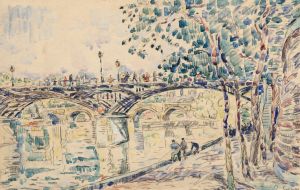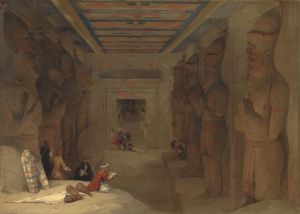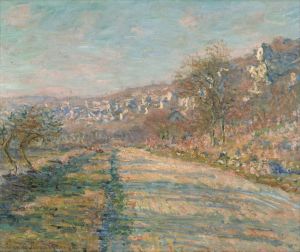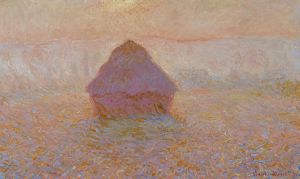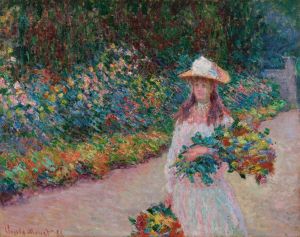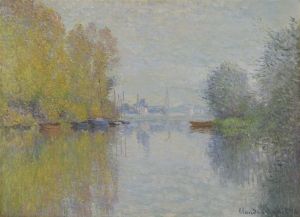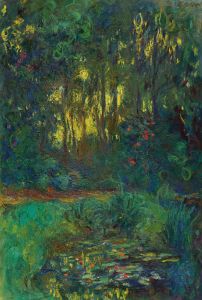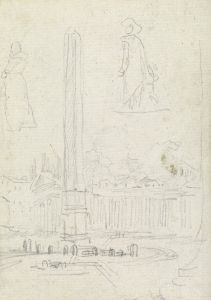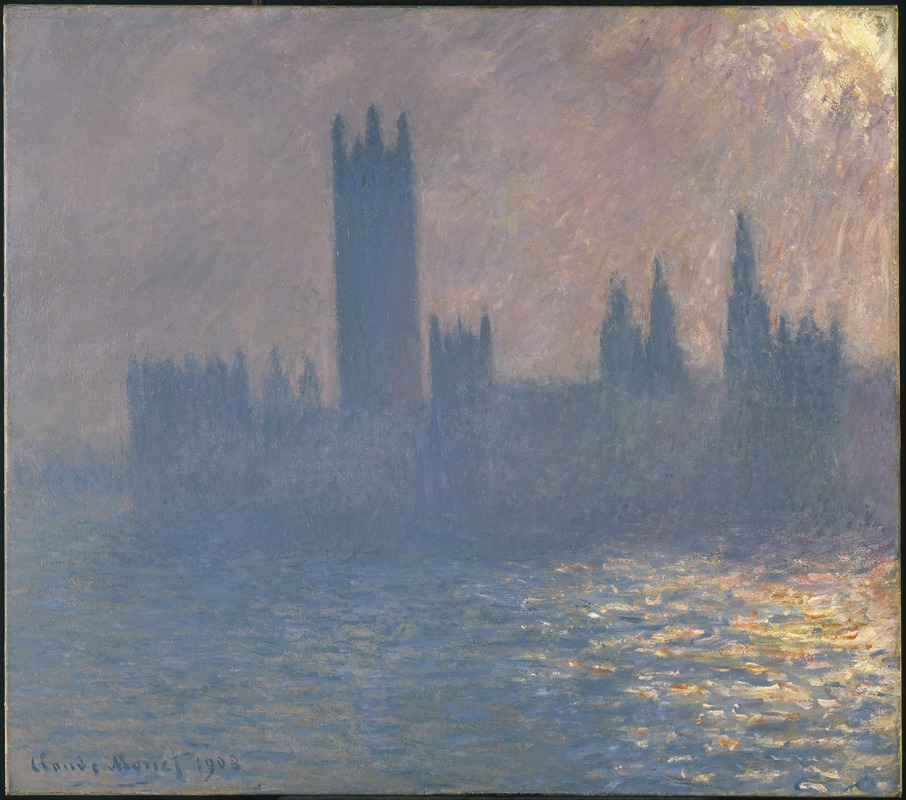
Houses of Parliament, Sunlight Effect
A hand-painted replica of Claude Monet’s masterpiece Houses of Parliament, Sunlight Effect, meticulously crafted by professional artists to capture the true essence of the original. Each piece is created with museum-quality canvas and rare mineral pigments, carefully painted by experienced artists with delicate brushstrokes and rich, layered colors to perfectly recreate the texture of the original artwork. Unlike machine-printed reproductions, this hand-painted version brings the painting to life, infused with the artist’s emotions and skill in every stroke. Whether for personal collection or home decoration, it instantly elevates the artistic atmosphere of any space.
Claude Monet's "Houses of Parliament, Sunlight Effect" is a notable work within the series of paintings that Monet created depicting the Palace of Westminster, home to the British Parliament, in London. This series is part of Monet's exploration of the effects of light and atmosphere on a single subject, a theme that is central to his work as an Impressionist painter.
Monet painted the "Houses of Parliament" series during his visits to London in the early 1900s, specifically between 1900 and 1904. The series consists of numerous canvases, each capturing the iconic Gothic architecture of the Houses of Parliament from different perspectives and under varying atmospheric conditions. Monet was particularly fascinated by the interplay of light and fog over the Thames River, which provided a dynamic backdrop for his paintings.
"Houses of Parliament, Sunlight Effect" exemplifies Monet's mastery in capturing transient effects of light and color. In this painting, Monet focuses on the way sunlight interacts with the mist and water, creating a luminous and ethereal atmosphere. The painting is characterized by its vibrant color palette, with hues of pink, purple, and gold dominating the canvas. These colors reflect the sunlight filtering through the fog, casting a warm glow over the scene.
Monet's technique in this painting, as in others from the series, involves loose, expressive brushstrokes that convey the fluidity and movement of the atmosphere. This approach allows Monet to depict not just the physical structure of the Parliament buildings, but also the ephemeral quality of the light and weather conditions. The result is a composition that feels both solid and insubstantial, capturing a moment in time that is constantly shifting.
The "Houses of Parliament" series, including "Sunlight Effect," is significant in Monet's oeuvre as it represents his continued interest in the effects of light and his ability to convey the mood and atmosphere of a scene. These works are also a testament to Monet's dedication to plein air painting, as he often worked outdoors to observe and capture the changing conditions firsthand.
Monet's London series, including "Houses of Parliament, Sunlight Effect," was well-received by critics and collectors alike. The paintings were exhibited in Paris in 1904, where they garnered attention for their innovative approach to capturing the essence of a place through light and color. Today, these works are celebrated as masterpieces of Impressionism and are held in high regard by art historians and enthusiasts.
The "Houses of Parliament" series, with its focus on atmospheric effects, also reflects Monet's broader interest in series painting, a method he employed to explore the same subject under different conditions. This approach allowed Monet to delve deeply into the nuances of light and color, pushing the boundaries of traditional landscape painting.
In summary, "Houses of Parliament, Sunlight Effect" is a quintessential example of Monet's Impressionist style, showcasing his ability to capture the fleeting beauty of light and atmosphere. Through his innovative use of color and brushwork, Monet transforms a familiar architectural landmark into a study of light and mood, offering viewers a glimpse into the ever-changing nature of the world around us.





